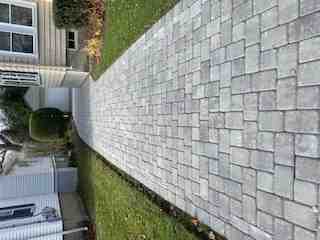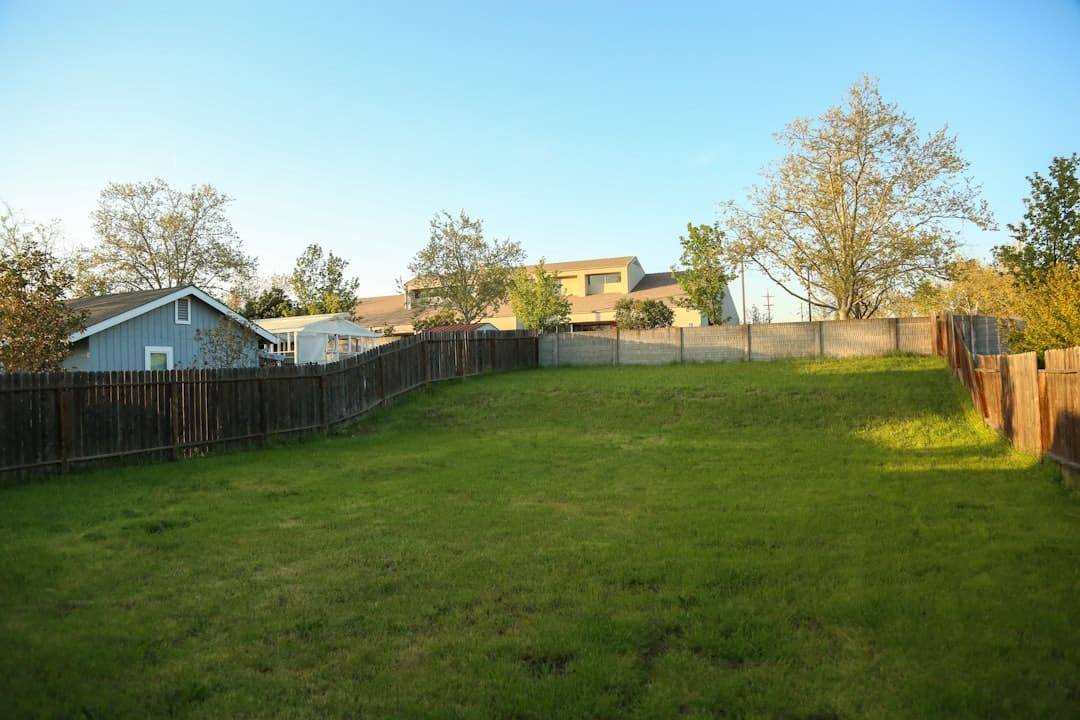Landscape and Drainage Solutions: Top 10 Effective Fixes
Tackling Yard Drainage Issues: Why It Matters
Experiencing yard drainage problems can be a headache for any property manager or homeowner. Too much water in your yard can lead to soggy lawns, standing water, and even leaks in your basement. These mishaps not only damage your property but can also cost you a lot in repairs. Plus, standing water can create a breeding ground for mosquitoes, adding to your woes.
Quick Fix for Yard Drainage Problems:
– Identify the Problem Areas: Locate where water pools.
– Aerate Your Lawn: Improve soil absorption.
– Regrade Your Yard: Create slopes for natural water flow.
– Install Drains: Use French drains, catch basins, or swales.
Taking proactive steps to address drainage issues ensures a safer, healthier, and more enjoyable outdoor space.
Identifying Yard Drainage Problems
Dealing with yard drainage problems can be frustrating. Here are common issues to watch out for and how to tackle them.
Standing Water
One of the first signs of a drainage problem is standing water after rain. Ideally, your soil should absorb water, and any excess should flow away from your home. If water pools in your yard, it could be due to:
- Low spots: Fill these with soil and re-seed the grass.
- Compacted soil: Aerate the soil to improve absorption.
- Underground springs: Consider creating a rain garden.
Tip: Always ensure your irrigation system isn’t overwatering your yard.
Poor Yard Grading
Poor grading is a major cause of yard flooding. Water should flow away from your home, not toward it. Improper grading can lead to basement leaks and structural damage. To fix grading issues:
- Regrade your yard: Create a slope that directs water away from your home.
- Install drains: Use French drains or catch basins.
Path and Patio Flooding
Paths and patios can also suffer from poor drainage, leading to water pooling and potential damage. Solutions include:
- Channel drains: Install these along the edges to divert water.
- Porous materials: Replace impervious surfaces with permeable ones, like gravel or decking.
Downspout and Gutter Problems
Improperly managed downspouts and gutters can cause significant drainage issues. Ensure:
- Downspout extensions: Direct water away from your home’s foundation.
- Regular cleaning: Clear gutters to prevent blockages.
Erosion
Erosion can damage your yard and foundation. It often occurs when water flow isn’t properly managed. To combat erosion:
- Retaining walls: Build these to hold soil in place.
- Plant ground cover: Use plants to stabilize the soil.
By identifying and addressing these common drainage problems, you can protect your property and enjoy a healthier, more functional outdoor space.
Common Landscape and Drainage Solutions
Aerate Your Lawn
Lawn aeration is a simple yet effective way to improve drainage. By creating small holes in the soil, you allow air, water, and nutrients to reach the grass roots. This process helps break up compacted soil, making it easier for water to penetrate.
Use a cultivator or an aerator tool for the best results. Aerate your lawn regularly, especially during the growing season. Follow up with a layer of topsoil to further improve soil structure.
Install a French Drain
French drains are a popular solution for managing excess water. They consist of a trench filled with washed gravel and a perforated pipe. The pipe collects water and directs it away from problem areas.
To install a French drain:
- Dig a trench: Ensure it slopes downward to guide water flow.
- Line the trench with geotextile fabric to prevent soil from clogging the pipe.
- Place the perforated pipe at the bottom of the trench.
- Cover the pipe with gravel and fold the fabric over the top.
- Fill the trench with more gravel and cover it with soil.
Create a Rain Garden
A rain garden is a beautiful and practical way to manage water runoff. By planting water-loving plants in a low-lying area, you can capture and absorb excess rainwater.
To create a rain garden:
- Choose a location: Find a spot where water naturally pools.
- Excavate the area: Dig a shallow basin to hold water.
- Mix soil and gravel: Use a mix of soil and gravel to ensure good drainage.
- Plant water-loving plants: Select plants that thrive in wet conditions, such as willows and primroses.
Rain gardens not only improve drainage but also support local wildlife and add aesthetic value to your yard.
Build a Dry Well
Dry wells are underground reservoirs that collect and disperse excess water. They are ideal for areas with limited space or where traditional drainage methods aren’t feasible.
To build a dry well:
- Excavate a hole: Make it deep enough to hold a significant amount of water.
- Install a porous siding: Use materials like gravel or perforated concrete rings.
- Backfill with gravel: Fill the well with gravel to allow water to percolate into the ground.
Dry wells help manage water runoff and prevent pooling on the surface.
Use Channel Drains
Channel drains are perfect for managing water on impervious surfaces like driveways and patios. These drains collect water and direct it away from areas where it can pool and cause problems.
To install a channel drain:
- Cut a trench across the surface where water pools.
- Install the drain: Place the channel drain in the trench.
- Connect to a drainage system: Ensure the drain leads to a suitable outlet.
- Seal and finish: Cover the drain with a grate and seal it with concrete or asphalt.
Channel drains are effective for preventing water pooling and protecting your pavement from water damage.
By implementing these landscape and drainage solutions, you can transform your yard into a healthier, more functional space. Each method addresses specific drainage issues, ensuring your property stays dry and beautiful.
DIY Yard Drainage Solutions
Add More Dirt
Got shallow areas where water collects? Adding more dirt can help. This simple fix involves filling in low spots with topsoil to create a more even surface. Here’s how:
- Identify low spots: Walk around your yard after a rainstorm to find areas where water pools.
- Add topsoil: Fill these spots with topsoil, making sure to smooth it out.
- Re-seed grass: After adding soil, re-seed the area to ensure your lawn stays lush and green.
Adding dirt helps prevent water from collecting and encourages better drainage.
Extend Your Downspout
If water is pooling near your house, extending your downspout can make a big difference. Downspout extensions help divert water away from your foundation, reducing the risk of basement leaks and soil erosion. Here’s what to do:
- Measure and cut: Determine how long the extension needs to be and cut it to size.
- Attach the extension: Connect the extension to your existing downspout.
- Create a gravel bed: Place gravel where the downspout releases water. This helps absorb runoff and prevents soil erosion.
By extending your downspout, you can keep water away from your home and direct it to a safer area.
Construct a Swale
A swale is a shallow channel designed to redirect runoff water to a natural body of water or a designated drainage area. It’s an effective way to manage water flow and prevent flooding. Here’s how to create one:
- Plan the path: Determine the best route for the swale, ideally leading to a natural body of water or a dry well.
- Dig the channel: Dig a shallow trench, making sure it slopes downward.
- Line with grass or gravel: Line the swale with grass or gravel to stabilize the soil and improve water flow.
Constructing a swale helps manage runoff water and keeps your yard dry.
Professional Landscape and Drainage Solutions
Regrade Your Yard
Regrading your yard is one of the most effective ways to manage surface water. Poor yard grading can lead to standing water, which can damage your landscape and even your home’s foundation. Regrading involves reshaping the land to create a downward slope away from your home.
Steps for Regrading:
- Assess the Slope: The yard should ideally have a slope of at least 1 inch per foot for the first 10 feet away from your home.
- Add Soil: If necessary, add soil to create the slope. Make sure to use topsoil, which is rich in nutrients and helps grass grow.
- Compact the Soil: Use a compactor to ensure the soil is firm and won’t settle unevenly over time.
- Plant Grass or Ground Cover: This helps stabilize the soil and prevent erosion.
Proper yard grading ensures that water flows away from your home, reducing the risk of water damage and improving your landscape’s health.
Install a Catch Basin
A catch basin is an underground drain designed to funnel excess water away from low-lying areas. It is particularly useful in areas where water tends to pool, such as around patios or driveways.
Steps for Installing a Catch Basin:
- Identify the Low Points: Determine where water tends to pool in your yard.
- Dig a Hole: Dig a hole large enough to fit the catch basin.
- Install the Basin: Place the basin in the hole, ensuring it is level with the ground.
- Connect to a Drain Pipe: Attach a drain pipe to the basin and run it to a safe discharge point, such as a dry well or storm drain.
- Cover and Secure: Fill the area around the basin with gravel and cover it with a grate.
Installing a catch basin can be labor-intensive but is highly effective at managing water runoff and preventing flooding.
Use a Sump Pump
If water collects in your basement, a sump pump is a crucial solution. A sump pump collects water and pumps it out of your basement, preventing major water damage.
Steps for Installing a Sump Pump:
- Dig a Sump Pit: Dig a pit in the lowest part of your basement, typically in a corner.
- Install the Pump: Place the sump pump in the pit. Make sure it is level and secure.
- Connect to a Drain Pipe: Attach a drain pipe to the pump and run it to an appropriate discharge point, such as a storm drain or a distant part of your yard.
- Install a Check Valve: This prevents water from flowing back into the sump pit.
- Test the System: Pour water into the pit to ensure the pump activates and drains correctly.
Using a sump pump helps to manage basement water collection and prevents water damage, keeping your home dry and safe.
By implementing these professional landscape and drainage solutions, you can effectively manage water runoff and protect your property from water damage. For more complex projects, consider consulting with experts to ensure proper installation and long-term effectiveness.
Frequently Asked Questions about Landscape and Drainage Solutions
How to fix a yard with poor drainage?
Fixing poor yard drainage involves several steps and solutions, each addressing specific problems:
- Aerate Lawn: Aerating your lawn improves soil permeability. This process involves creating small holes in the soil to allow air, water, and nutrients to penetrate the grass roots. Regular aeration can significantly improve water absorption and reduce surface runoff.
- Amend Soil: Adding organic materials like compost or sand to your soil can improve its structure and drainage. This is especially useful for clay-heavy soils that retain water.
- Regrade Yard: Adjusting the slope of your yard ensures water flows away from your home and other structures. Proper regrading can prevent water from accumulating in unwanted areas.
- Build Retaining Wall: Retaining walls help manage water flow and prevent erosion, especially in sloped areas. They hold back soil and create a barrier that directs water away from vulnerable spots.
- Install French Drain: French drains consist of a trench filled with gravel and a perforated pipe that redirects water away from problem areas. They are ideal for managing water around liftd planters or areas prone to flooding.
- Dig Dry Well: Dry wells are subsurface structures designed to collect and gradually disperse excess water into the ground. They help manage runoff and prevent water from pooling on the surface.
- Install Dry Creek Bed: Dry creek beds are shallow, rock-lined channels that mimic natural creeks and help direct water flow during heavy rains. They are effective in controlling erosion and preventing water from accumulating in low-lying areas.
- Create a Rain Garden: Rain gardens capture and absorb rainwater runoff from roofs, driveways, and other surfaces. They are planted with water-tolerant plants that help filter and absorb the water, improving drainage and adding beauty to your landscape.
Do it yourself yard drainage solutions?
If you’re a DIY enthusiast, there are several effective solutions you can implement to improve your yard’s drainage:
- Add More Dirt: Fill in shallow areas where water collects with additional soil. This helps level the ground and prevents water from pooling. Re-seed the grass after adding soil to ensure a smooth, green lawn.
- Extend Your Downspout: Add an extension to your downspout to divert water farther away from your home. This prevents water from pooling near the foundation.
- Aerate Grass: Regularly aerate your lawn to improve soil structure and water infiltration. This reduces surface runoff and helps water penetrate the soil more easily.
- Dig Creek Bed: Create a dry creek bed to channel water away from your yard. This is a natural-looking solution that can effectively manage runoff and prevent erosion.
- Construct a Swale: A swale is a shallow, wide channel that redirects water away from your yard. It’s a simple yet effective way to manage runoff and prevent water from pooling in low areas.
What is the best drainage system for a backyard?
Choosing the best drainage system for your backyard depends on your specific needs and the layout of your property. Here are some of the most effective options:
- Dry Wells: Dry wells are underground reservoirs that collect and slowly disperse excess water into the ground. They are ideal for managing runoff in areas with limited space.
- French Drains: French drains are versatile and effective for redirecting water away from problem areas. They consist of a trench filled with gravel and a perforated pipe, making them suitable for various drainage issues.
- Downspout/Sump Connections: Connecting downspouts to a sump pump system can effectively manage water runoff from your roof. The sump pump collects water and pumps it away from your home, preventing water damage.
By understanding these landscape and drainage solutions, you can choose the best option for your yard, ensuring effective water management and a healthy, attractive landscape.
Conclusion
At Marchi Paving Inc., based in Chelmsford, MA, we pride ourselves on delivering top-notch landscape and drainage solutions. With over 20 years of experience, we have built a reputation for high-quality execution and advanced techniques.
Our services span a wide range, including asphalt paving, excavation, masonry, and drainage solutions. Each project is handled with the utmost care and precision, ensuring that we meet and exceed our clients’ expectations.
One of our core strengths is our ability to handle commercial snow removal efficiently, keeping your property safe and accessible during the harsh winter months. We use advanced equipment and a dedicated team to ensure that every job is completed to the highest standards.
If you’re facing yard drainage problems or need professional landscape solutions, we are here to help. Our team of experts is ready to assess your needs and provide a customized solution that fits your property perfectly.
For more information on our drainage solutions, visit our Drainage Solutions page.
Thank you for considering Marchi Paving Inc. for your landscape and drainage needs.
By choosing us, you’re opting for experience, quality, and reliability. Let’s work together to transform your yard into a well-drained, beautiful space.



